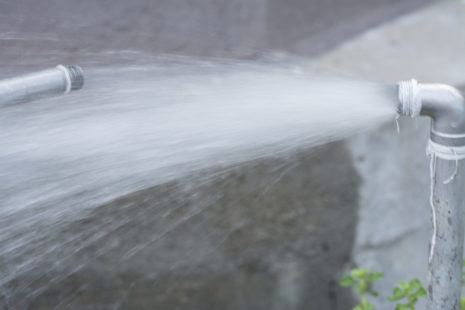5 tips to limit water ingress in cables

We are all seeing changes in our climate, but have you thought about the impact it could have on your IT system? There is seldom a winter month that passes when the Molex Technical Support department fails to get a call about the effect of water on the most vulnerable part of the system, the structured cabling infrastructure.
Effect on electrical performance
The ingress of water into the data cabling system can have a serious effect on its ability to support high bit rate data applications. When cable gets wet, its dielectric performance changes which affects impedance and the related parameters of attenuation and return loss.
Cable construction
It is a common misunderstanding that PVC, the material used to coat standard data cable, is waterproof. It’s not, but it is hygroscopic (the phenomenon of attracting and holding water). The same problem exists with LSZH cables.
Cables designed for use outdoors offer waterproof measures through barrier tapes and gel filling which are costly and can reduce electrical performance. It is also worth noting that many of these waterproofing gels are petroleum based and are therefore unsuitable for use indoors as they represent a fire risk.
Severity of exposure
An even greater threat than the effects of water ingress through the cable sheath is posed by the open end of a cable being exposed. The tightly twisted pairs inside a data cable encourage a capillary action which can draw water significant distances into the cable, destroying the electrical characteristics.
Prevention is better than cure
Preventing cables getting wet is obviously the best policy. Ideally, businesses located in high risk areas should consider the threat of flooding at network design stage, but even for existing networks there are measures which can be taken.
- Suspend cables in the ceiling void.
- Consider containment: Cable baskets offer better draining in the event of cables getting wet, but closed containment provides better protection from small amounts of water.
- It might seem obvious but keep wet services away from large concentrations of cable. Don’t run water pipes through these communications spaces and don’t locate kitchens or toilets nearby. Avoid placing telecommunications rooms or equipment rooms in basements – particularly when adjacent to rivers!
- If segregation is not possible then consider feeding racks or cabinets from above, and / or building bund walls to contain flood water within less sensitive areas.
- If connecting outdoors use cables designed for this purpose with waterproof measures through barrier tapes and gel filling.
Conclusion
Cables in which water has entered via capillary action through the open end should always be replaced. Cables which have suffered severe water ingress through the sheath may also need to be replaced. Have the network thoroughly tested and take advice from your manufacturer or a trusted installer.
